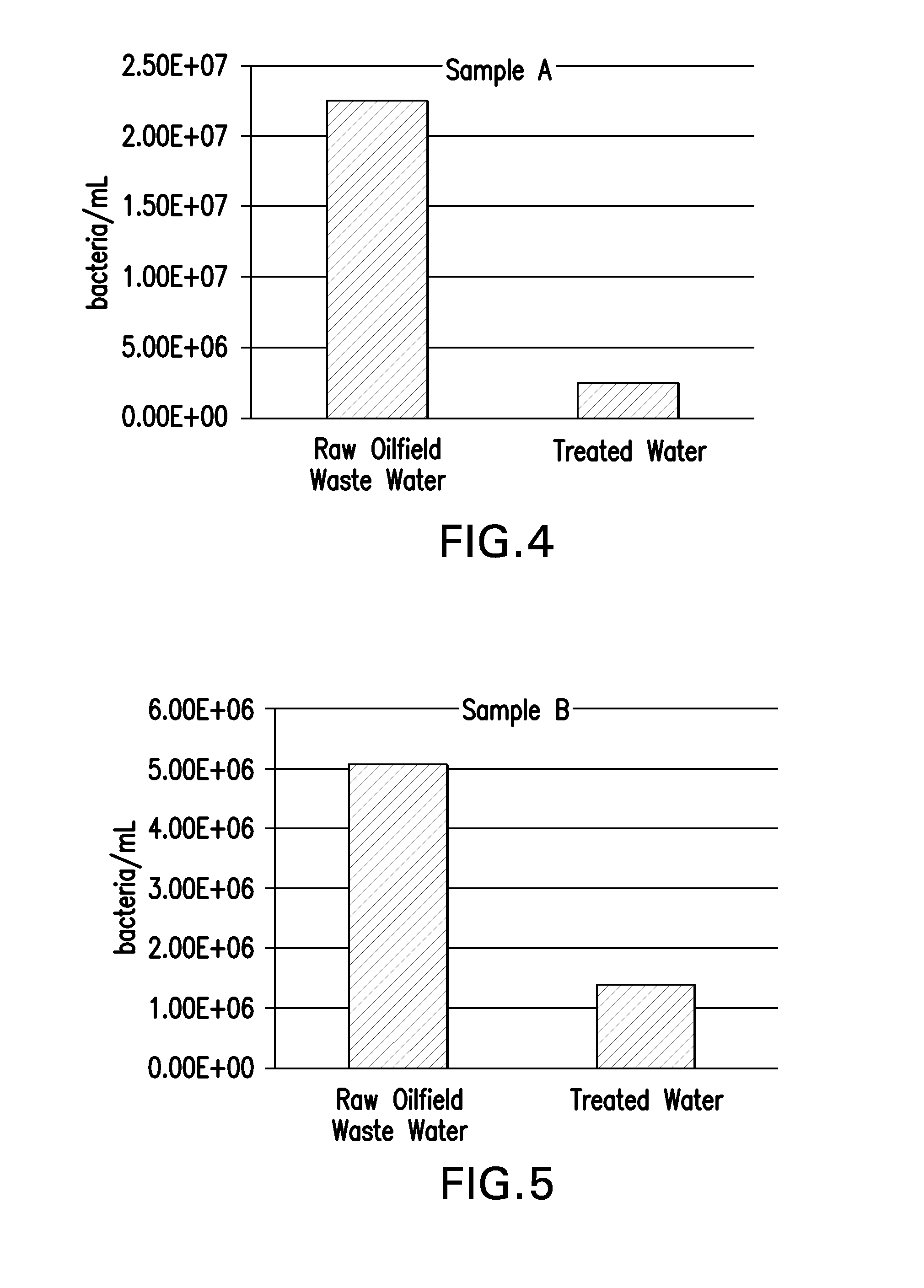Treating and recylcing oilfield waste water
a technology for recylcing and oilfield waste water, which is applied in the direction of quarries waste water treatment, multi-stage water/sewage treatment, and wellbore/well accessories, etc. it can solve the problems affecting the quality of oilfield fluids, and contaminating many industrial processes by microorganisms. , to achieve the effect of reducing the number density of bacteria
- Summary
- Abstract
- Description
- Claims
- Application Information
AI Technical Summary
Benefits of technology
Problems solved by technology
Method used
Image
Examples
example
Biocide Treatment of Oilfield Waste Water
[0092]Two samples (Sample A and Sample B) of raw oilfield waste water containing bacteria were acquired from different oil wells. Sample A and Sample B were treated by combining 10 mL of 30 vol % hydrogen peroxide to 250 mL of the respective oilfield waste water at room temperature. The samples were stirred. An aliquot of Sample A and Sample B was collected and subjected to ATP quantification before and after treatment with the hydrogen peroxide. Thereafter, the number density of the bacteria was determined for the raw oilfield waste water and the treated water for Sample A and Sample B. The results for each sample are shown in FIG. 4 (for Sample A) and FIG. 5 (for Sample B). As apparent from FIGS. 4 and 5, treatment of oilfield waste water with hydrogen peroxide drastically decreases the number density of bacteria in the treated water.
[0093]While one or more embodiments have been shown and described, modifications and substitutions may be ma...
PUM
| Property | Measurement | Unit |
|---|---|---|
| oxidation reduction potential | aaaaa | aaaaa |
| density | aaaaa | aaaaa |
| number density | aaaaa | aaaaa |
Abstract
Description
Claims
Application Information
 Login to View More
Login to View More - R&D
- Intellectual Property
- Life Sciences
- Materials
- Tech Scout
- Unparalleled Data Quality
- Higher Quality Content
- 60% Fewer Hallucinations
Browse by: Latest US Patents, China's latest patents, Technical Efficacy Thesaurus, Application Domain, Technology Topic, Popular Technical Reports.
© 2025 PatSnap. All rights reserved.Legal|Privacy policy|Modern Slavery Act Transparency Statement|Sitemap|About US| Contact US: help@patsnap.com



